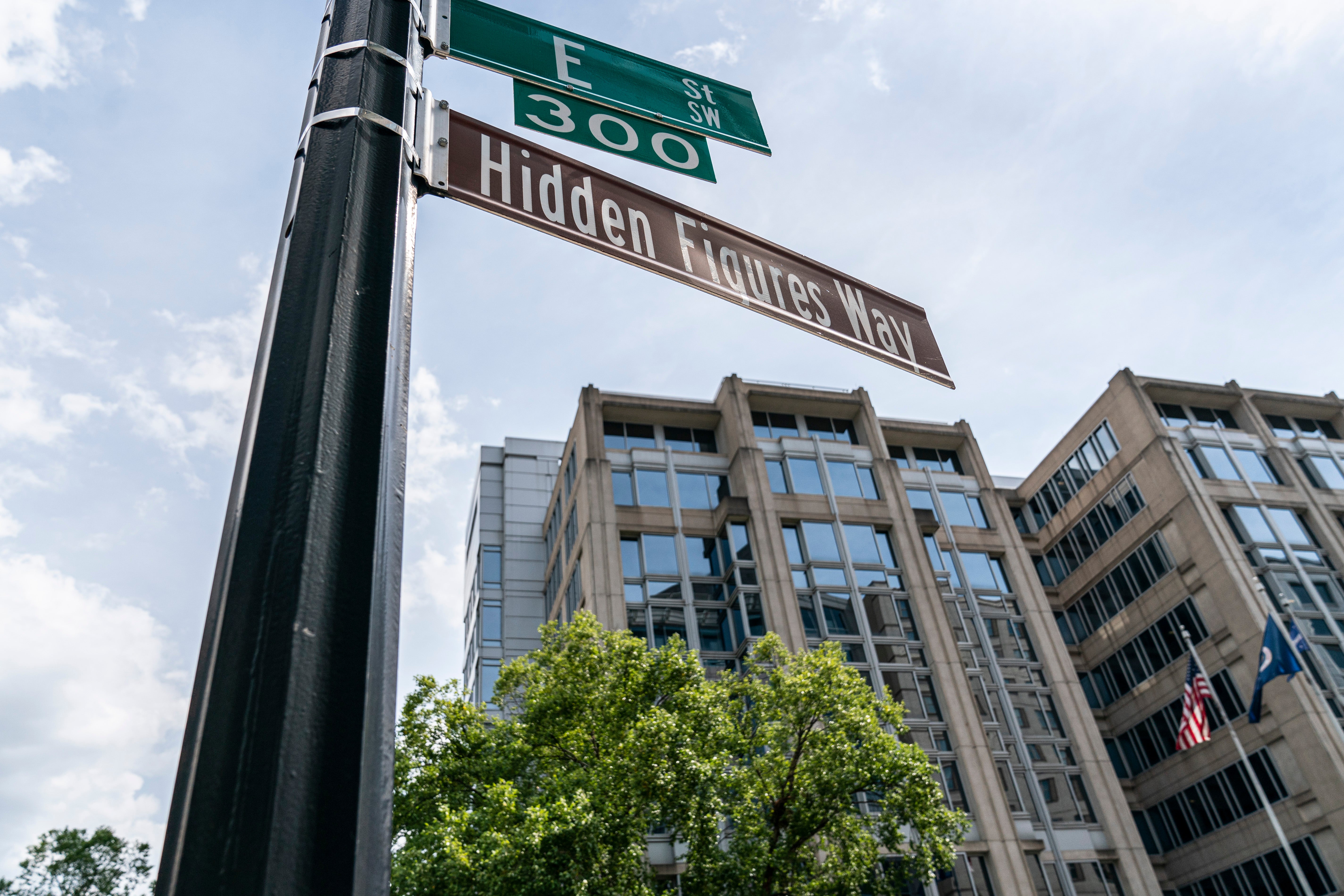Nasa’s DC headquarters renamed after ‘Hidden Figures’ engineer Mary Jackson
Jackson became Nasa’s first Black female engineer in 1958

Your support helps us to tell the story
From reproductive rights to climate change to Big Tech, The Independent is on the ground when the story is developing. Whether it's investigating the financials of Elon Musk's pro-Trump PAC or producing our latest documentary, 'The A Word', which shines a light on the American women fighting for reproductive rights, we know how important it is to parse out the facts from the messaging.
At such a critical moment in US history, we need reporters on the ground. Your donation allows us to keep sending journalists to speak to both sides of the story.
The Independent is trusted by Americans across the entire political spectrum. And unlike many other quality news outlets, we choose not to lock Americans out of our reporting and analysis with paywalls. We believe quality journalism should be available to everyone, paid for by those who can afford it.
Your support makes all the difference.Nasa is renaming its DC headquarters to honour Mary Jackson, the administration’s first Black female engineers who was one of the inspirations behind the film Hidden Figures.
The headquarters naming ceremony will take place this Friday (26 February) at 1pm ET. It will be live-streamed on YouTube, as well as on the agency’s Twitter and Facebook accounts and on its app.
After the ceremony, the building will be known as the Mary W Jackson Headquarters Building. It was previously known as Nasa Headquarters.
Born in 1921 in Hampton, Virginia, Jackson first worked as a math teacher in Calvert County, Maryland. After several professional changes, she joined the segregated West Area Computing section of Nasa’s Langley Memorial Aeronautical Laboratory in 1951.
Looking to be promoted from mathematician to engineer, Jackson needed to complete graduate math and physics courses at a high school that was then segregated. As a Black student, Jackson had to obtain special permission from the City of Hampton to attend the classes.
Read more: Nasa releases astonishing image of Venus
Jackson completed the courses, and in 1958 became Nasa’s first Black female engineer.
Jackson, as noted by Nasa, “began her engineering career in an era in which female engineers of any background were a rarity; in the 1950s, she very well may have been the only black female aeronautical engineer in the field. For nearly two decades she enjoyed a productive engineering career, authoring or co-authoring a dozen or so research reports, most focused on the behavior of the boundary layer of air around airplanes.”

In 1979, frustrated by what the agency described as “the glass ceiling” which “was the rule rather than the exception for the center’s female professionals”, Jackson took a demotion and started a position as a programme manager working to hire and promote female scientists, mathematicians, and engineers.
Jackson retired from Nasa in 1985 and died in 2005 aged 83. Her life was chronicled in the 2016 book Hidden Figures: The American Dream and the Untold Story of the Black Women Who Helped Win the Space Race, along with those of two other Nasa mathematicians, Katherine Johnson and Dorothy Vaughan.
The film adaptation of the book, Hidden Figures, was released that same year. Jackson is portrayed by Janelle Monáe, while Taraji P Henson plays Johnson and Octavia Spencer stars as Vaughan. The film was nominated for Best Picture at the 2017 Oscars, and Spencer earned a nomination in the Best Supporting Actress category.
Acting Nasa Administrator Steve Jurczyk is leading the naming ceremony on Friday. Jackson’s granddaughter Wanda Jackson is attending.
Join our commenting forum
Join thought-provoking conversations, follow other Independent readers and see their replies
Comments